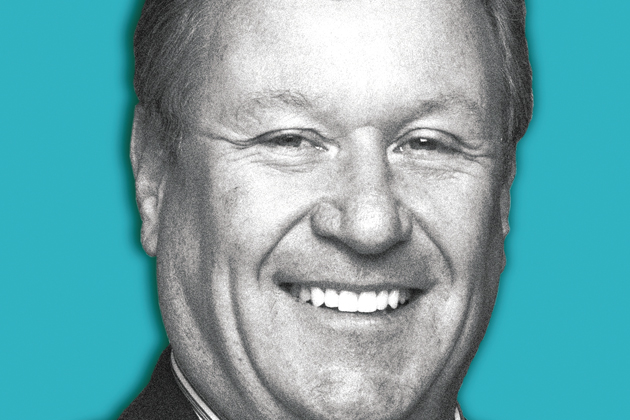
Richard J. Roberts Jr., 2015 RIMS president, keeps his company’s premiums down the old fashioned way: making sure losses are low and working closely with insurers and brokers.
Roberts is director of risk management and employee benefits for Ensign-Bickford Industries, Inc., in Simsbury, Connecticut, which manufactures aerospace and defense products, pet food additives, specialty chemicals and pyrotechnics. The company’s biggest line of products is pet food flavor enhancers, which has overtaken aerospace in the wake of cuts to the United States defense budget.
Roberts spoke to Risk Management about developing his company’s insurance program and what he sees as important ongoing issues for both individual risk managers and RIMS as a whole in the coming year.
RM: How do you deal with the varied risks of your company’s wide range of products?
Roberts: There are a few strategies we use to get the coverage we need. First, we work really hard to sell our company to the underwriters and we have them look closely at our loss history. That is paramount. Safety is number one and making sure our products are safe for use in the marketplace is right behind our employees’ safety. We sell this point over and over again. If we were, or became, a loss-active account, we would have a lot of trouble finding reasonably priced insurance, based on the products we make.
A second approach we use is to develop and nurture long-term relationships with our insurers. In fact, one underwriter has been on our account longer than I have been with the company and I have been here for 22 years. Typical advice says to shop your insurance every three to five years, but that strategy may not work well for higher hazard risks for certain lines of business. Long-term partnerships have worked extremely well for us.
With such varied products, putting together a corporate program is a challenge, but it is important for efficiency and it saves money. My broker and I spend a lot of time selling the company, its safety record and its longevity to the insurer, but we are somewhat limited. Out of the thousands of insurers that are out there, we have about 10 that would consider writing certain coverages for this account. So we do not have the same access as, say, a financial services company.
RM: What is so challenging about insuring your products?
Roberts: Some insurers can’t write anything involving explosives because of reinsurance treaties. Others don’t like chemical manufacturing. Still others don’t want to be in the food and beverage or pet food additive business. Aerospace is also a unique field and specialty coverage. For that, we work with the Aircraft Builders Council in London, which provides very large limits of insurance.
Our goal is to have one insurer because it provides premium relief. We also keep costs down by taking sizeable retentions for a company of our size. We don’t have a captive, but we run our workers compensation and products liability much like a captive, self-insuring where we can, and take up to a $2 million retention because we are comfortable with the risk and we know we can manage it. If we tried to go out and buy first-dollar workers compensation insurance for some of our plants, we would be paying three to five times as much in premium as we do now.
Keeping the risks down and saving money on coverage is the risk manager’s job. We have to sell ourselves to the insurance marketplace, because if they just looked at what we did, 90% or more of them would run away. Our long-term partners, however, are very comfortable with the risks because of our longevity.
RM: What perils do you see risk professionals facing this year?
Roberts: The two biggest ones won’t surprise anybody. Cyberliability is on everybody’s radar. Can risk managers prepare? Cyber is changing every day, so you do your best. I don’t think anyone feels 100% safe that they won’t be hacked. Some may think it can’t happen to them, or that the repercussions aren’t as dramatic as they can be, and reputations may suffer.
The supply chain is on everybody’s mind as well. There is no guarantee that suppliers will be able to stay in business with all the catastrophes that can happen and these events are so far-reaching. I have made inquiries about my supply chain and I get requests from our customers about it as well. We work with them to develop plans to mitigate the risk. Having them ask for that validates that you are working with a good customer.
RM: As RIMS president, you have said you would like to strengthen risk professionals’ networks. How do you plan to do that?
Roberts: We believe growth will come from two areas: the international network and rising risk professionals. How do we do a better job of getting those members the information they need? We need to focus on bringing in more people, as well as enhancing the way we stay in touch with those who could potentially enter the risk management field. We have great growth in the number of students joining RIMS, but when they graduate, only a small percentage can get into risk management right away. Instead, they go to the brokerage houses, insurers and consultants and then move into risk management. So how do we bridge the gap for that group when it may be years before they become a risk manager? How do we stay in touch with them? And then, how do we pique their interest to bring them to risk management? That’s our challenge.
This is an exciting time to be a risk manager. RIMS wants to assist risk professionals in developing programs that help their employers and elevate risk management within their company by working more closely with senior management. There is a lot of awareness around risk management. Its time has come.
